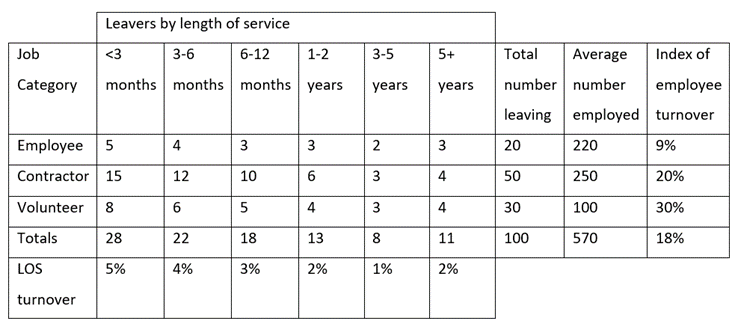Considering and addressing employee retention rates

Retaining your best performers is vital in the current climate.
The ‘Great Resignation’ and a generation-high number of job vacancies have brought employee retention issues into sharp focus. Retaining your top people is key to sustained success.
Retention rates are an important barometer in business. But how do we measure them? And what potential flaws are there? Is there a better way to measure retention?
Recruitment cost concerns
A common concern around retention is employee replacement cost – 50% of salary accounting for recruitment and induction. This can be higher in some senior posts where it can take 12 months for an executive to feel comfortable in their new position. However, as skills shortages take hold, ‘old’ skills are no longer taught and with tightening labour pools, retention will become a more focused effort for employers.
Leaver analysis
Traditionally, we measure turnover by number of leavers in a year divided by average number of employees that year. The Stability Index which looks at the number with one year’s service divided by the number employed one year previously is considered a superior measure. However, the leaver’s length of service (LOS) analysis is thought to be stronger still.
Figure 1 - Length of service at ‘ACME Trading Co’.

This helps identify areas to target as the analysis indicates areas of concern by job category. With a one-dimensional analysis, areas of real concern can be overshadowed.
Many factors should be considered when examining data around people leaving: age, industry, role, geographic region and more. You can probably expect differences comparing younger workers in London-based creative industries with middle-aged workers in local government in Scotland. With this in mind, we should revise our thinking and expectations.
Risk analysis
Additionally, we could combine some existing factors into predictive analytics to identify those at risk of leaving. This could include key employee, morale and days since last check-in. The onus is on the manager to check-in with the employee to identify and address potential risks.
Proactive risk analysis of leavers is seldom conducted but this approach provides an opportunity to act before the point of leaving and is supported by predictive analytics.
Exit interview
The exit interview is often a tick-box exercise prompting little action. To make it more meaningful, several actions could be taken:
- Manager to invite the person who has resigned to a check-in meeting.
- Ask them why they’re leaving. More money? Better work-life balance? Issues with their manager? Less commuting? There could be any number of factors.
- Record the employee’s reasons.
- Utilise departmental analytics in conjunction with leaving reasons to get a fuller picture.
Some businesses have reframed the exit interview as the ‘retention’ or ‘stay’ interview – moving away from negative terminology. This is designed to open discussion about why an employee is leaving. Is there is a possibility to address the reasons?
Automate the creation of a formal check-in for leavers – include achievements in the last year (including recognitions), pay reviews, transfers, completed courses. Review the exit interview process and re-focus it onto retention.
Workforce planning
Information held can inform a headcount forecast using employee turnover by job category or department. We can take known data on leavers and apply the retention calculations outlined in figure 1 above. This provides predictions to HR and managers around expected headcount – given current turnover rates. These numbers, as well as the costs of recruitment and lost productivity, can also be presented with a variation of +/- 1%.
Other considerations
Calculate the estimated cost of replacing the leaver based on recruitment cost, induction time and any courses attached to the job. Additionally, consider a likely period of lower productivity by the new employee. There might also be a period when the role is unfilled.
Provide LOS leaver analysis to managers and HR through notifications, highlighting key areas or leaver trends. Also provide a risk analysis for potential leavers and deliver notifications to managers.
Build out departmental information to include LOS leaver analysis by department.
Provide workforce planning analytics based on current turnover rates. Link to recruitment costs.
Preventive measures
Regular check-ins between manager and employee will have a two-fold effect: improving retention while also acting as an early warning system identifying employee flight risk. These check-ins give the opportunity for two-way feedback, but managers must act promptly on warning signs from these meetings. Making more data available to managers, including LOS turnover data, will give managers the ability to put their energy into people more at risk of leaving. This demands clear data and training managers to use the data in their day-to-day activities. Businesses need to decide if they wish to make retention a key part of their HR strategy, reducing overall employment costs in the process. Or, if this is not a major driver, they need to be clear about this and embrace the resulting turnover!
A solution at hand
In addressing retention, organisations will see improved employee performance as well as freeing up time for both manager and employee. Consider a solution like People First which revolutionises work processes by applying cutting-edge human-centred technology – enhancing and simplifying communications in the process.



